Despite their earlier relegation to counterculture populations such as convicts, circus performers, and others living on the edge of mainstream society, tattoos have become ubiquitous in American culture over the past several decades. In a 2010 survey, Pew Research found nearly forty percent of Millennials have at least one tattoo.
Reality TV shows, such as Miami Ink and LA Ink, have helped to bring the art form and culture to a wider audience in the past two decades. Museum exhibits have also helped to illuminate the history and practice of tattooing for the public. (Here in San Francisco, the Asian Art Museum is currently hosting a tattoo exhibit.)
But how did we get to this point, when we now see tattoos where we never saw them before, on the arms and legs of upstanding citizens and public servants--soldiers, teachers, doctors, police…and park rangers? We have sailors to thank.
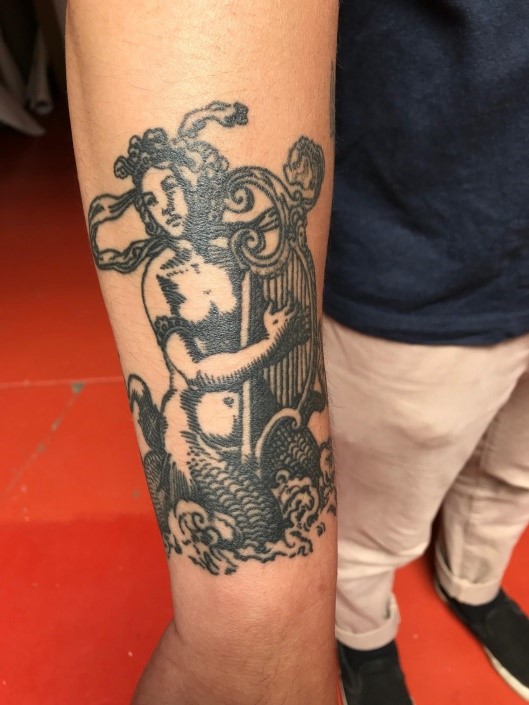
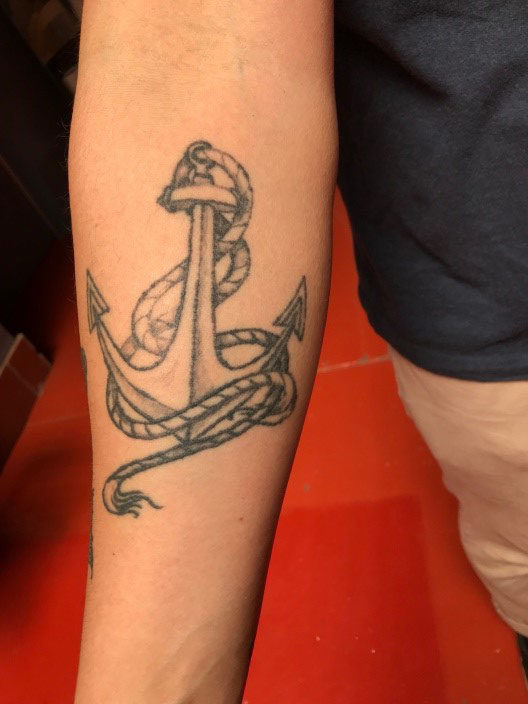
CAPTION: Tattoos on the forearms of a park employee, reminiscent of his time in the Navy.
Despite the fact that body adornment and tattooing have been practiced in cultures around the world for thousands of years, sailors were responsible for bringing this practice back to the west, starting in the 18th century. During his voyage aboard the H. M. Bark Endeavor in 1769, British Captain James Cook recorded his observations of the practice of tattooing in Tahiti: “Both sexes paint their Bodys, Tattow, as it is called in their Language…This is done by inlaying the Colour of Black under their skins, in such a manner as to be indelible...” This is the earliest known reference to the word “tattoo” in the west, and it is thought it is based on the Tahitian word meaning “to mark.” Sources have also said that many of Cook’s crew brought tattoos back home with them.
So how did the practice of tattooing catch on among sailors? There are many reasons that would drive a sailor to get a tattoo. In his memoir/sociological study, Bad Boys and Tough Tattoos: A Social History of the Tattoo with Gangs, Sailors and Street-Corner Punks, Samuel Steward, an academic-turned- tattoo artist, writes about the numerous motivations that can lead sailors (and others) to get a tattoo. Among the reasons he noted are rebellion, compulsion to collect, sentimentality, for identification purposes (in case of death), celebration of a milestone, or just as a way to pass the time. He explains that tattoos can also serve as an identifier and unifier of a group of people. Merchant sailors would often get tattoos after going through a common experience with their crew mates, such as crossing the Pacific Ocean, the Equator, or rounding Cape Horn. It was common for sailors on an “around the horn” voyage to tattoo their ship on their chest, as we see in these two images from our park’s photograph collection:
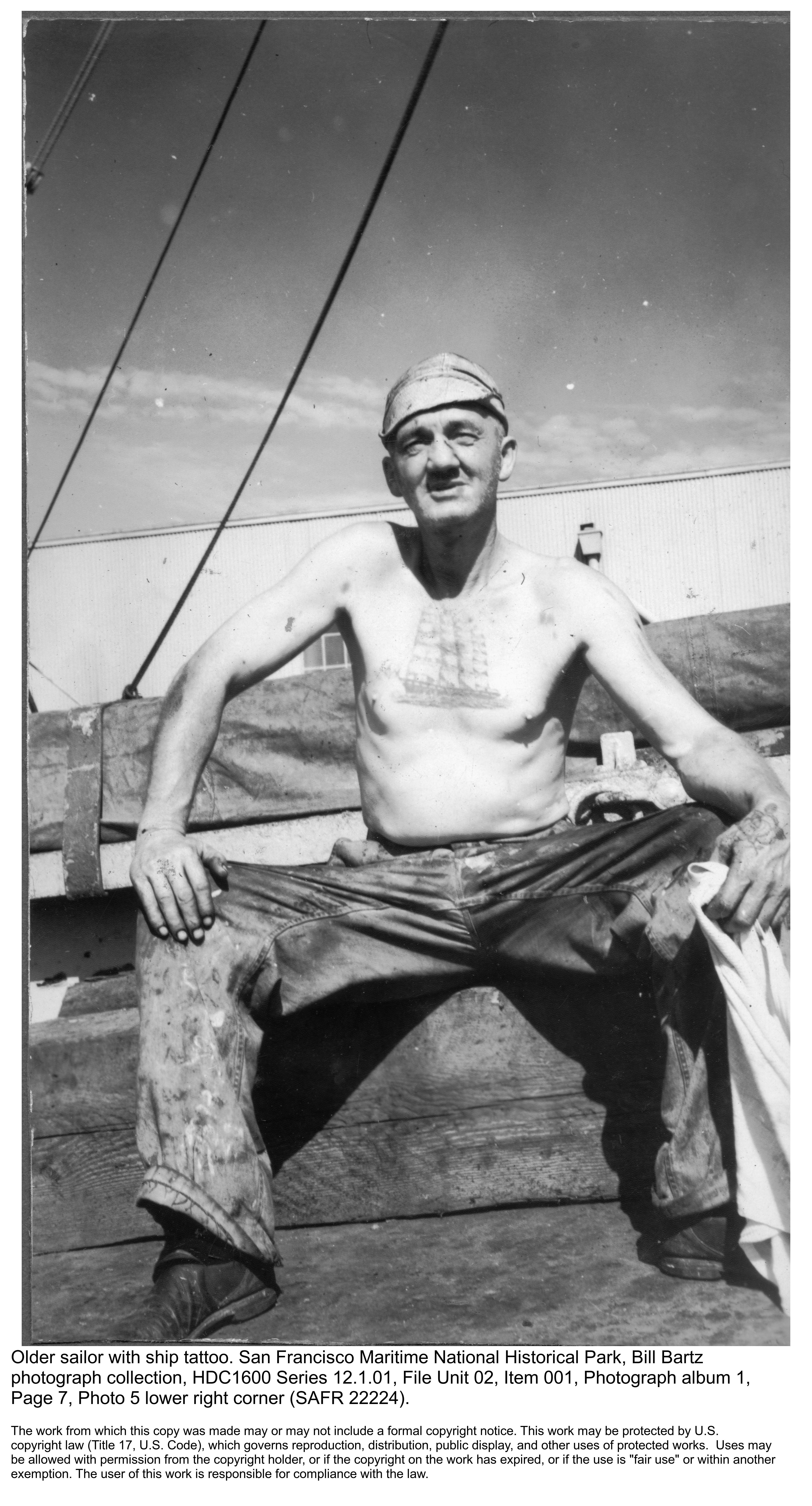
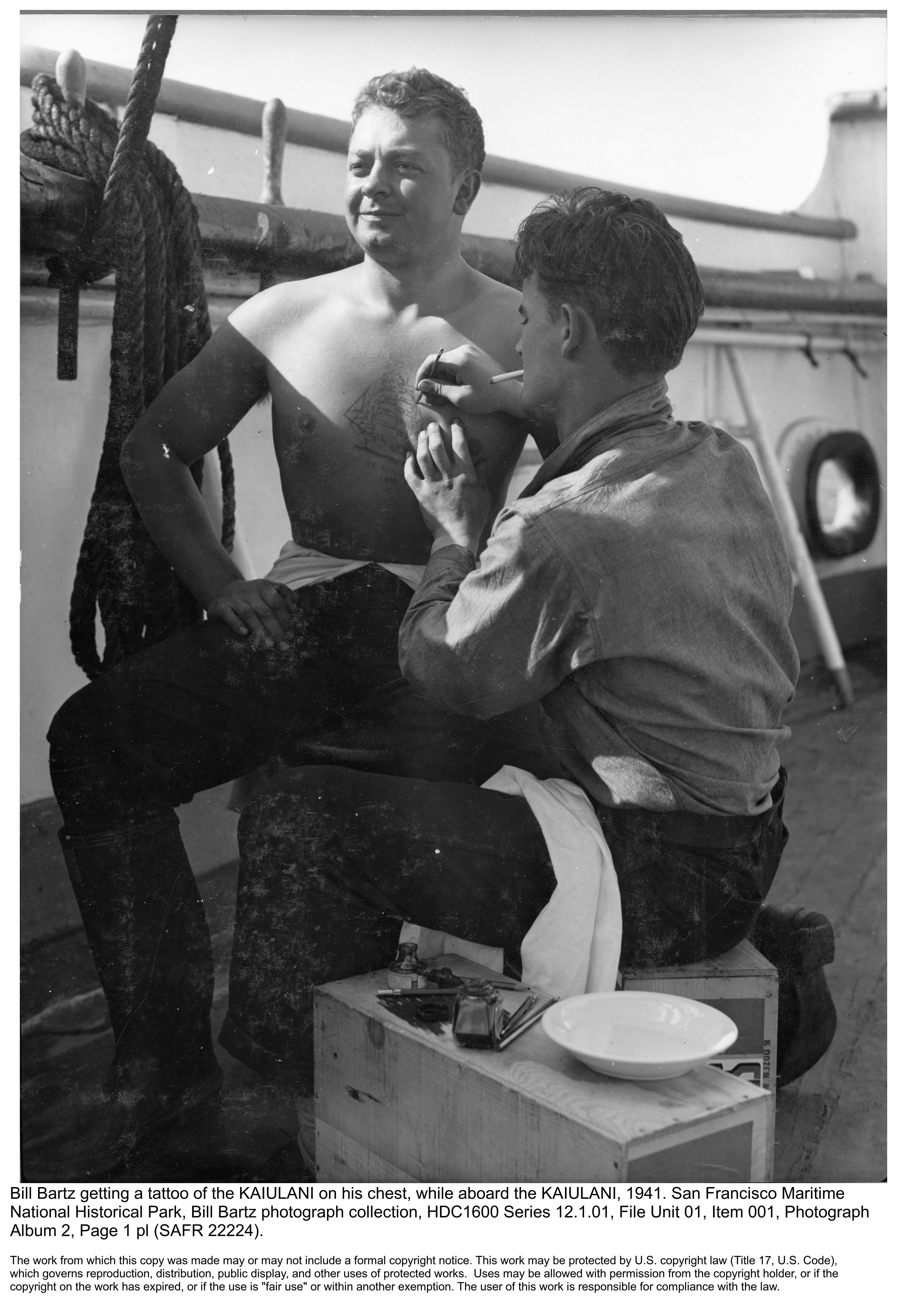
(Click here to read more about the Kaiulani, and its connection to the founders of our Maritime Museum.)
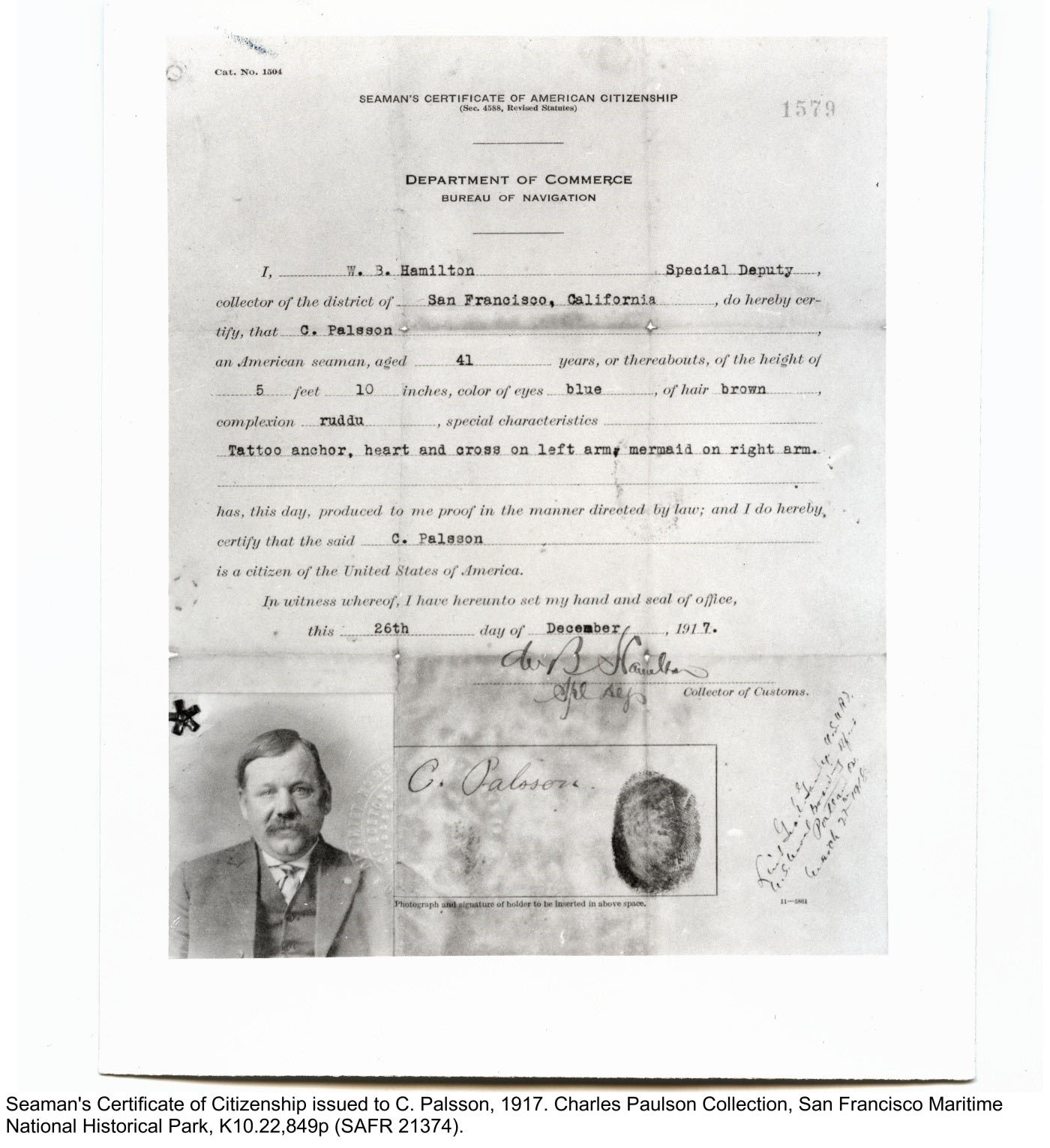
CAPTION: This certificate of American citizenship pointing out sailor tattoos as distinguishing marks on the arms of sailor C. Palsson.
In an interview about the 2013 exhibit, “Tattoos and Scrimshaw: The Art of the Sailor,” Vancouver Maritime curator Patricia Owen agreed that “tattoos for sailors were like a code for a select group. You could look at another sailor, and you could know where they’d travelled.”
Distance travelled was also indicated in pictorial form. A bluebird or a swallow tattooed on one’s chest signifies 5,000 nautical miles traveled—and two birds, once on each side of the chest, twice that. Designs such as a pig and rooster inked onto the feet, were born of the superstition that tattooing these animals on one’s body would save the bearer from drowning. This illustration by artist Lucy Bellwood (who was a sailor on the tall ship Lady Washington) explains the meaning behind some of the most popular maritime tattoos:
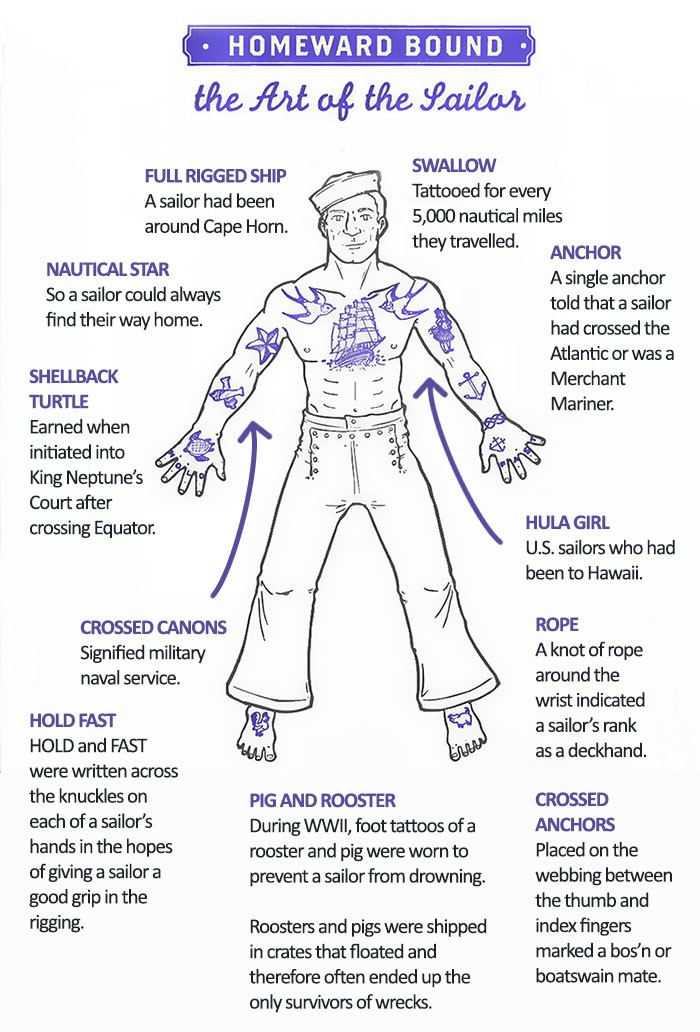
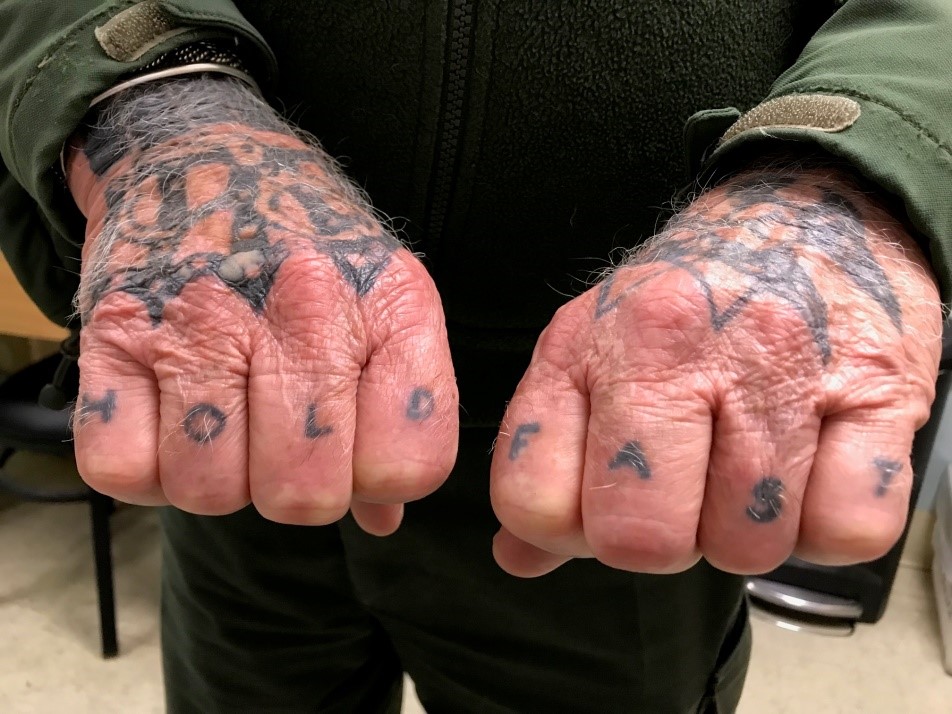
CAPTION: One of our ranger staff, a navy veteran, shows his “HOLD FAST” tattoos. He explains that navy sailors often tattooed these two words on their hands, hoping “the hands would remember to hold tightly and not let go” when climbing the rigging.
And check out this fully-inked sailor, Fingal Larson, in this undated photograph aboard our square rigger, Balclutha!
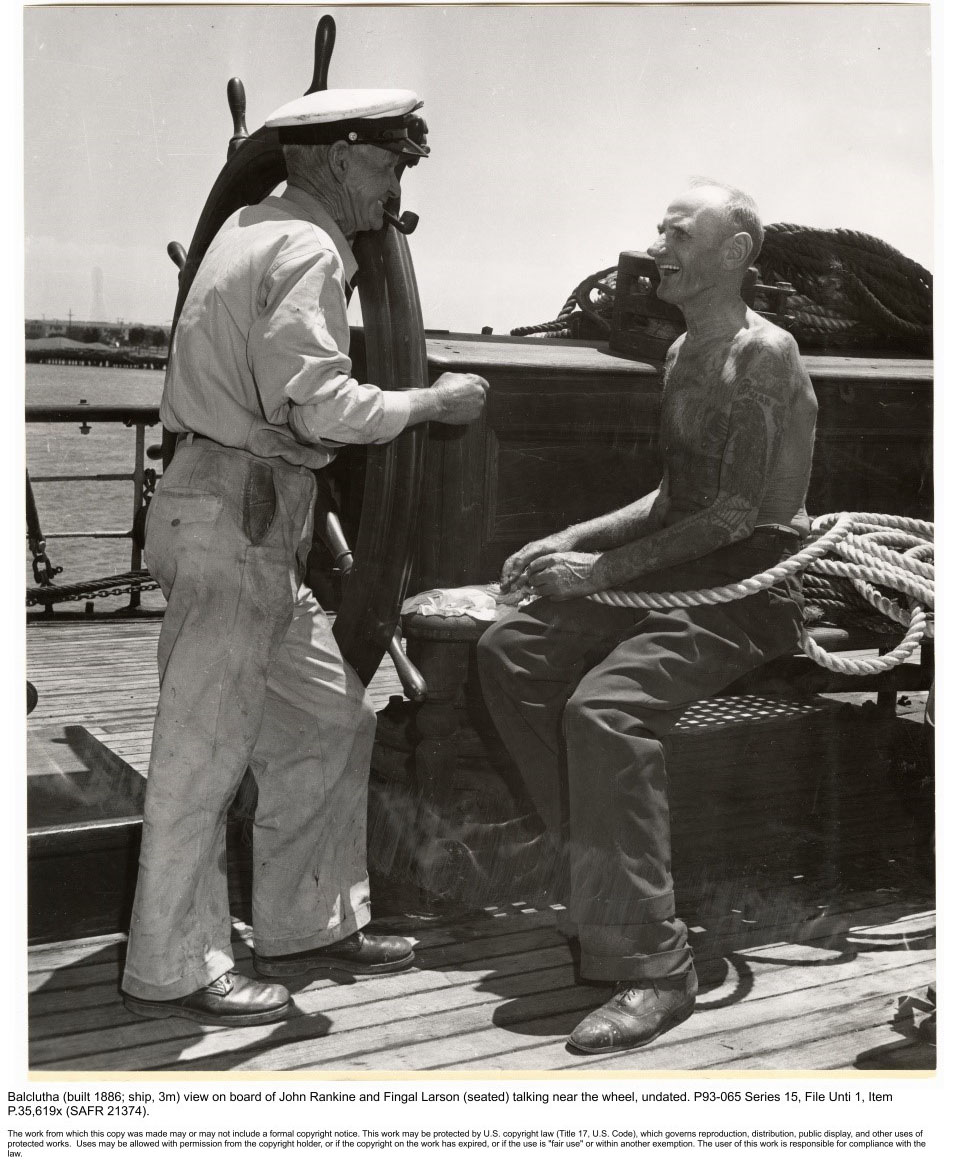
For Navy sailors looking to pick up a “souvenir” of their voyages, tattoos served well, for they took up little space and they could carry them easily on their bodies. The popularization of “flash” saved a sailor precious time during their brief shore leave by enabling them to choose a ready-made design. “Flash” is an illustrated poster displayed by tattoo artists of their available designs. Having a ready-made “catalog” of options also enabled tattoo artists in port cities to make their business model more efficient by serving more clients in less time with standardized designs.
The simple black line style with minimal color touches, which today is widely recognized as a “sailor tattoo” dates back to flashes created in the 1930s-1940s. Any reputable flash artist would be sure to offer a selection of tattoos that would appeal to sailors: anchors, full-rigged ships, pinup girls, patriotic symbols, etc.
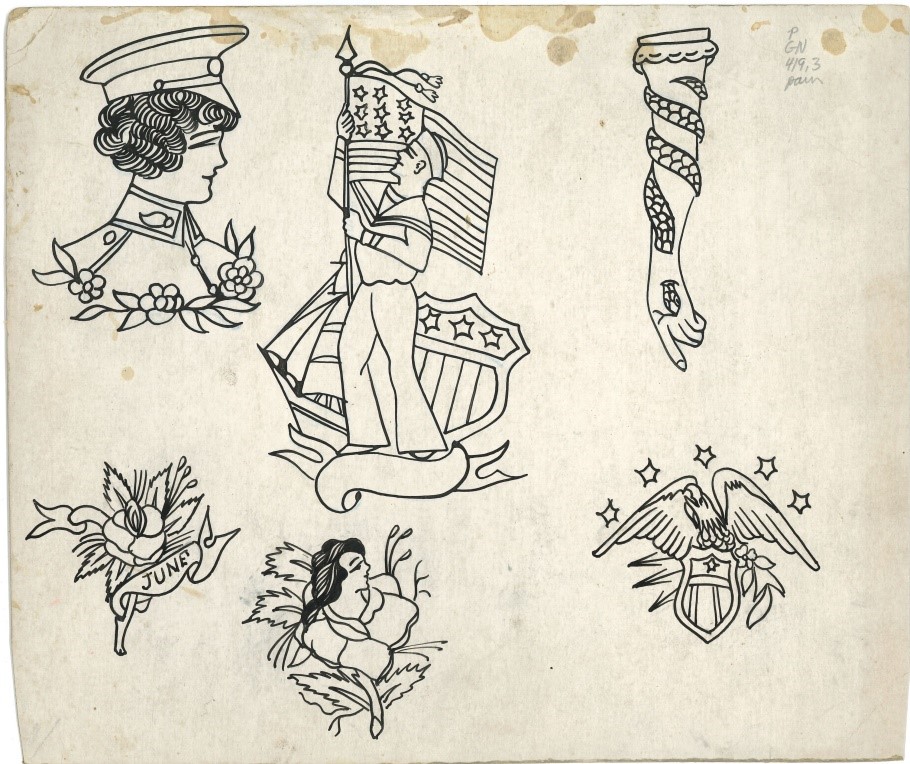
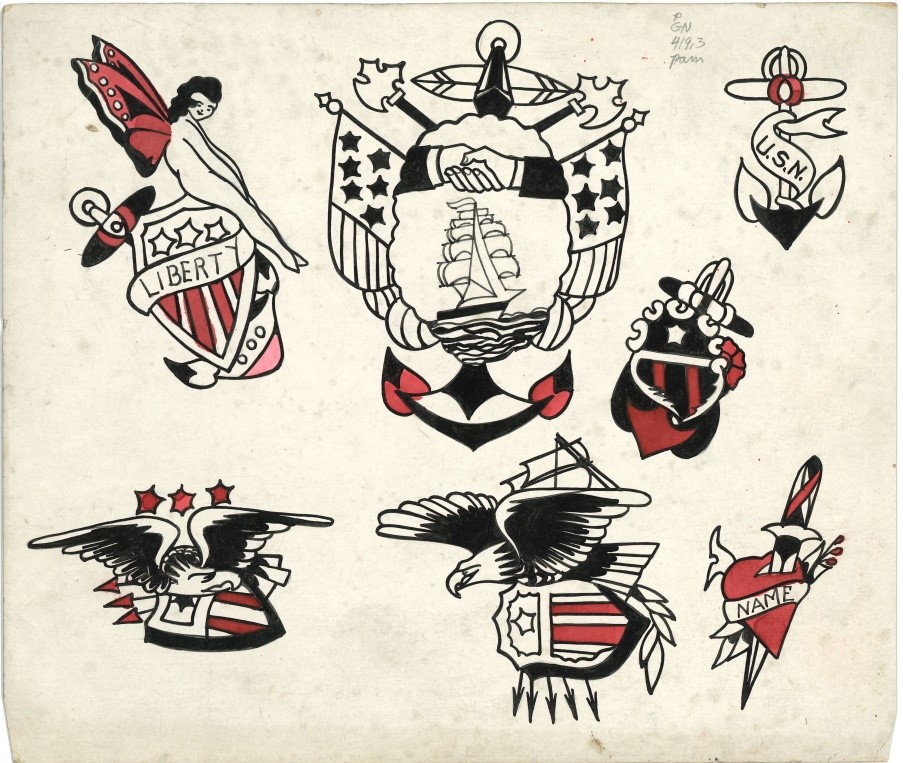
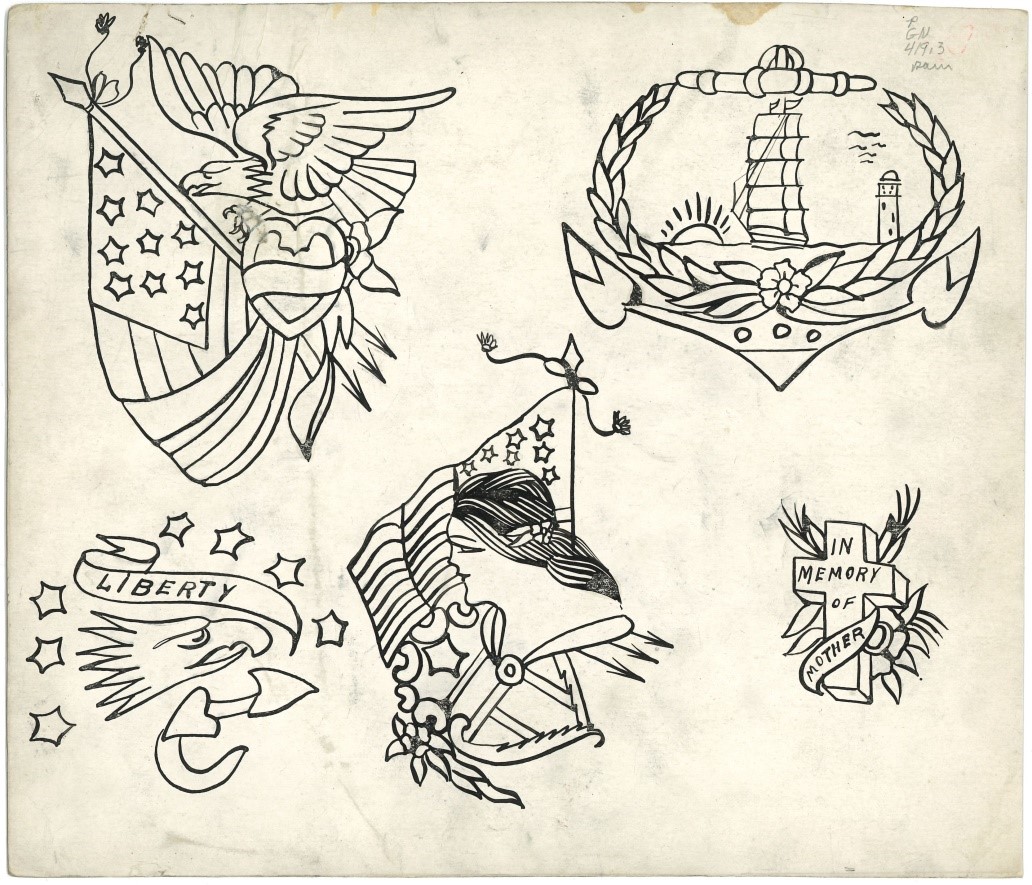
CAPTION: Three flash sheets by unknown artist, from the collection of San Francisco Maritime National Historical Park, SAFR-02563. We are hoping to find out who the artist may be, and how these flashes came into the park’s collection!
Tattoo artists working in distant cities, such as “Lou the Jew” in New York, and “Brooklyn Joe” Lieber in San Francisco, developed long distance professional relationships and gained wider exposure for their artwork by sharing flashes with each other. Yet many discerning sailors seeking a tattoo would not trust an artist just by looking at their flashes, since many less experienced artists copied flashes originally designed by others. Only seeing a completed tattoo on someone else’s body would convince a discerning sailor to take a chance on an unfamiliar tattoo artist.
Later generation tattoo artists such as “Sailor Jerry”, based in Honolulu, and San Francisco-based artists Lyle Tuttle and Pat Martynuik carried on the practice of creating flashes, which helped to spread their work, and the popularity of tattoos in general, in the second half of the 20th century. California tattoo artists Don Ed Hardy and Cliff Raven’s work is set apart for the fact that they did not rely on flash, but instead created original drawings to make each tattoo unique and distinct.
(Hardy’s book, “Lew the Jew" Alberts: Early 20th Century Tattoo Drawings, inspired a recent show at the Contemporary Jewish Museum in San Francisco. Hardy’s own career retrospective, Deeper Than Skin, opened at the DeYoung Museum on July 13th.)
************
While researching this post, I became curious about the earliest references I could find for tattoo parlors, artists, or sailor clients in California. Where did sailors on the west coast go for their tattoos? A quick dig through historic California newspapers revealed that one of the earliest references to a tattoo parlor was in San Bernardino in 1910 (and in this ad we see an early reference to a short-term tattoo “pop-up shop”)!
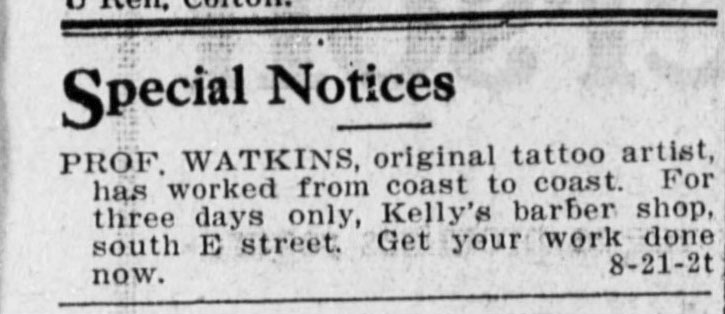
Image source: San Bernardino Sun, Volume 32, Number 151, 23 August 1910.
The earliest listing of a tattoo business in San Francisco shows up in 1930, owned by L.L. McKeever on Market Street:
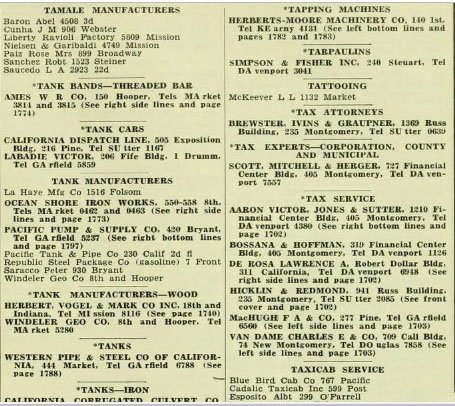
Image source: Polk's Crocker-Langley San Francisco city directory, 1930.
Yet many years earlier, in 1875, professor C. L. Miller, of Stockton Street in San Francisco, targeted what was probably a growing issue—unwanted “sailor ink.” He advertised his scientific method for removing extraneous tattoos as well as other cures:
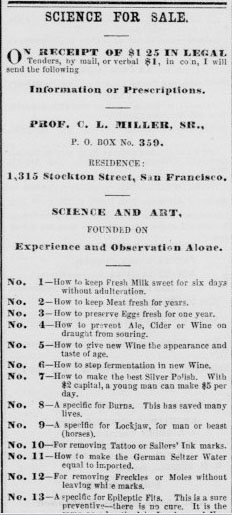
CAPTION: Too much ink on your body, sailor? Send away for a special concoction! Source: Sacramento Daily Union, Volume 1, Number 231, 11 November 1875
It’s hard for readers today to remember back to a time when the tattoo taboo kept this incredible folk art out of the mainstream and tucked away under shirtsleeves or military uniforms. Tattoos are finally seeing the light of day, thanks to a long tradition of mariners who have marked their bodies with the stories of the sea.
Do you have a maritime tattoo? Care to share? Post a pic and tell us your tattoo story on social media with the hashtag #mymaritimetattoos
…….Blue
Songs are like tattoos
You know I've been to sea before
Crown and anchor me
Or let me sail away
Hey Blue
And there is a song for you
Ink on a pin
Underneath the skin
An empty space to fill in …..
–Joni Mitchell, “Blue”
